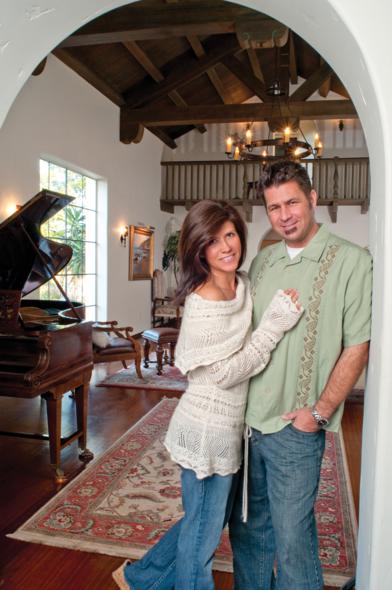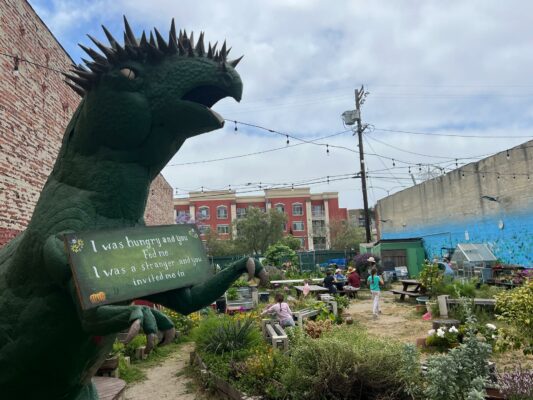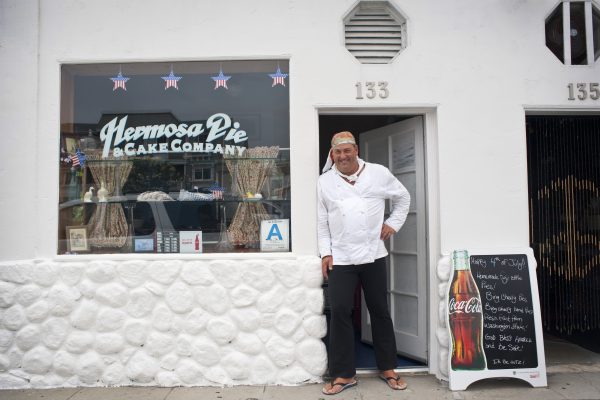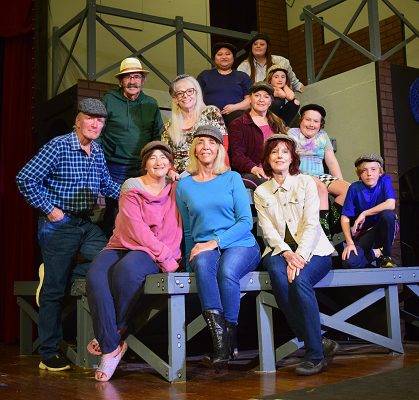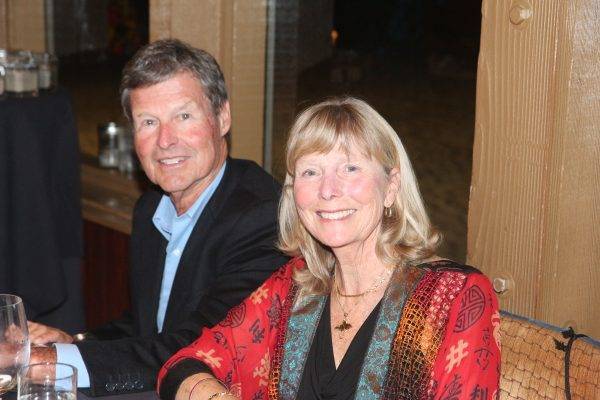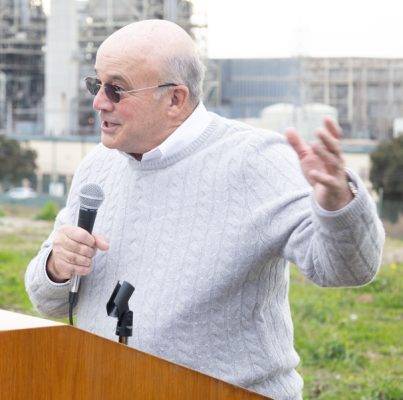
John Phillips has spent more than two years with a new love in his life, and now that she’s presentable, he wants everyone to meet her.
Wife Carmen hasn’t minded at all.
That special introduction will occur between 10 and 4 on Friday, April 15, and Saturday, April 16, when Philips’ love will debut as part of the Palos Verdes Art Center’s “Historic Homes Tour,” which also includes visits to two other historic homes in Palos Verdes Estates. A walking tour, dining and shopping are also on the weekend agenda at locations in venerable Malaga Cove Plaza.
Sponsored by the Art Center’s Circle in celebration of the Center’s 80th anniversary, the tour will highlight homes built during the Palos Verdes Project real estate development that began in the early 1920s. Proceeds will benefit its arts exhibitions, educational programs and community outreach.

The two-day event will also include work by local artists, 13 boutiques and a collectibles booth, all of which will be found in the Plaza, which contains the Gardener Building, the fledgling community’s first commercial structure, built in 1925. Other notable landmarks are the Neptune Fountain, a replica of the original in Italy, dedicated in 1930, and the Syndicate Building, (El Portal) now home to Malaga Bank, which took shape in 1930.
As for Phillips, his commitment to the patient and authentic restoration of the family’s Paseo del Mar home punctuates a nearly life-long fascination “with how everything is connected.” Original elements in the home reflect his compulsion for authenticity and his keen eye for architectural details that took wing, he said, as a child during family visits to Hearst Castle and Balboa Park. During a lengthy interview in his new/old home, he also recalled earlier visits to the Peninsula watching peacocks and spotting sea life in the tide pools that border it.
And in another recollection, Phillips’ memory brought to life a postage stamp he saw in his teens that contained an image of Frank Lloyd Wright’s Fallingwater House in Wisconsin. “I was struck by that—a house over running water. It stayed with me,” he said.
His passion for genealogy is a companion to this keen interest in beginnings. “I like to turn things up, to discover the unexpected,” he explained. “I researched everything for this house. The terra cotta on the floor is original and other tiles I salvaged from French farmhouses. Some of them even contain paw-prints made while the material was still wet,” he said, pointing to the indelible marks in the surface.
As for the old tiles on the roof, Phillips went on to note that he removed them entirely before repairing the surface and replacing it with the originals. “I have just wanted this house to be true to what it is,” he said, “especially since the names of the original tile-makers are still here.”
A South Bay native, Phillips is no stranger to houses, but plumbing had been the primary focus of his life while growing up and spending weekends working at his grandfather’s J. E. Phillips Plumbing shop in Lawndale. Later, while at El Camino, his interest turned to exteriors—to architecture. And by the time he was 20, he had taken over the plumbing business and was involved in every aspect of house design. “I learned as I went along,” he noted, building his first home in Hawthorne and subsequently a second in Manhattan Beach, where the family lived for seven years, before moving to the Paseo del Mar property last year when it was finally completed.

In addition to Carmen, to whom he has been married for 11 years, the young family consists of sons Charlie, 8; Tommie, 6, and Henry, 2. Carmen, he said, has been involved in the plumbing business and is now a regular companion on their flea market and antique excursions to discover interior items and accessories that are compatible with the house. “We bought several pieces from the former owner,” Phillips said, indicating the grand piano and two wooden-armed upholstered chairs in the living room, plus the complete dining room ensemble across the entry hall.
“More than two years ago, we really weren’t in the market for a house, but we’d drive down to the Peninsula on weekends and look around, keeping an eye on this particular house, hoping the price would come down.” On one of those weekends, the price had come down. “I saw the potential. It was pure.”
In addition to his preoccupation with the house, Phillips has recently produced for Arcadia publishers a photo book with captions about the early history of Palos Verdes Estates. He’s also involved with the Malaga Cove Homeowners’ Association and the Homes Association in landscaping Malaga Cove School. As an extension of his passion for authenticity, he’s a member of the recently organized Historic Homes of Palos Verdes group. And, he’s already at work on a new book dealing with Palos Verdes Estates architecture.

A second home on the tour is one of the original Palos Verdes Project “spec” homes built in 1927. It overlooks the Palos Verdes Golf Club and many years later was home to Commander and Mrs. Joseph Chadwick, who founded Chadwick School in 1935.
The couple received the 10,000 square-foot dwelling with two adjacent buildings as a gift from Mathilde McCormick Oser, whose daughter had graduated from Chadwick. The Chadwick family took residence in 1947, and it was there that Mrs. Chadwick died in 1984, having been predeceased by her husband.
The current owners purchased the house in 2005, and immediately began a restoration process that is still in progress. “Our intent,” they said, “was to restore the home to its former grandeur and preserve it as a valuable example of both early Palos Verdes architectural and cultural history.” It is considered a fine example of Spanish Revival style, and contains many original features including oak planks, terra cotta tiles, many alcoves and balconies, wrought iron and Moorish arches and motifs
The property is steeply terraced with paths and retaining walls of Palos Verdes stone, many fruit trees and a rose garden. As in many other instances, Frederick Law Olmsted, Jr. was the original landscape architect.
The third home, called the Roessler House in honor the first Palos Verdes Estates mayor, Fred Roessler, was built in 1926 for Donald Lawyer, sales manager for the Palos Verdes Project.
As was the custom in those early days, awards were given to certain homes for their design, and in 1927, the home received an “honorable mention” in the Palos Verdes Bulletin, the property owners’ newsletter. It was a typical example of the Spanish Colonial (Spanish Revival) style of that period, which was required of all new homes in the Project.

Roessler’s daughter and her husband inherited the home, which was sold in the 1980s, remodeled and subsequently acquired by the current owners in 2000, who “chose to keep the old style but bring the plumbing, electrical and plaster to brand new condition and increase the size throughout to match the scale of the original public rooms.”
They did add a 6,400 square-foot, three-story wing to accommodate their family and their lifestyle, although many of the original features were carefully dismantled and restored to integrate the old with the new, and they converted the original garage into a guest house.
Pre-sale member tickets are $40 and can be ordered on-line at www.pvartcenter.org; by calling the Art Center at 310-541-2479; at Corners of the World in Malaga Cove Plaza; at Nantucket Crossing in Rolling Hills Estates, or at the Art Center. Price for non-members is $45, or $50 on the days of the tour. The cost includes shuttle transportation to the houses from the First Church of Christ Scientist, 4010 Palos Verdes Drive North, plus an alfresco lunch provided by The Yellow Vase, Malaga Café and Ranch Market. (The homes are not handicapped accessible, and children under 12 are not permitted.)




